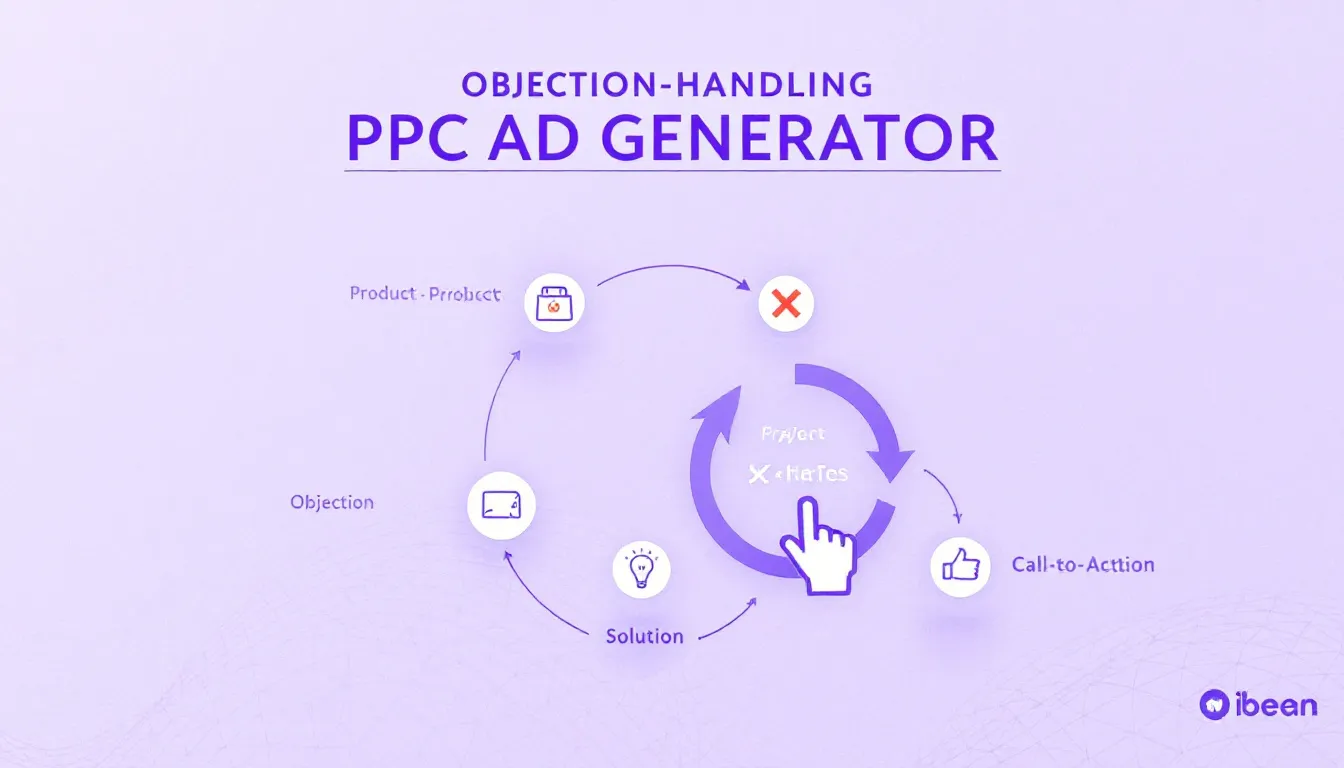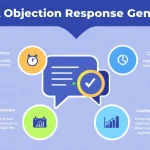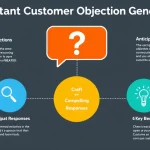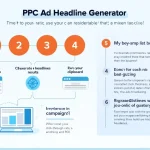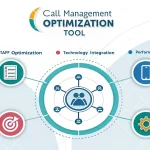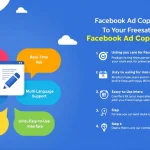Is this tool helpful?
How to Use the Paid Search Ad Generator Effectively
The Paid Search Ad Generator tool consists of four main input fields designed to help create compelling advertisements that directly address customer objections. Here’s a detailed guide on using each field:
- Product or service being advertised: Enter your specific offering. For example, “Premium leather wallets” or “Professional resume writing services”
- Common objection: Input the primary concern your target audience typically expresses. Examples include “Limited warranty coverage” or “Long delivery times”
- Unique selling proposition: Detail your solution to the stated objection. For instance, “Lifetime warranty included” or “Same-day delivery guarantee”
- Call to Action (Optional): Specify the desired customer response, such as “Shop now with free shipping” or “Schedule your consultation today”
Understanding the Paid Search Ad Generator
This innovative tool streamlines the creation of targeted paid search advertisements by focusing on a critical aspect of marketing: addressing customer objections head-on. It employs a strategic approach that combines product features, customer pain points, and compelling solutions to generate ads that resonate with potential customers.
Core Components of Effective Paid Search Ads
- Problem identification (customer objection)
- Solution presentation (unique selling proposition)
- Value demonstration
- Action motivation (call-to-action)
Benefits of Using the Paid Search Ad Generator
1. Time Efficiency
Creating compelling ad copy typically requires significant time and effort. This tool streamlines the process by providing a structured framework that guides users through the essential elements of an effective ad.
2. Objection-Focused Approach
By specifically addressing common customer concerns, the generated ads are more likely to resonate with potential customers and overcome their hesitations to purchase.
3. Consistent Messaging
The tool ensures that all generated ads maintain a consistent structure while addressing specific objections, helping maintain brand voice across different ad campaigns.
4. Strategic Framework
The tool’s structure follows proven marketing principles, helping users create ads that incorporate key persuasion elements.
Addressing User Needs and Problem Solving
Converting Objections into Opportunities
The tool transforms common customer objections into compelling selling points. For example:
- Original Objection: “Your software seems complicated”
- Generated Solution: “User-friendly software with free training – Master it in 24 hours”
Enhancing Ad Relevance
By focusing on specific objections, the ads become more relevant to potential customers actively searching for solutions to their concerns.
Practical Applications and Use Cases
Example 1: Service-Based Business
Input:
- Product: Personal Training Services
- Objection: No time for gym visits
- USP: Virtual training sessions available 24/7
- CTA: Book your free virtual assessment
Example 2: E-commerce Product
Input:
- Product: Organic Skincare Line
- Objection: High price point
- USP: Concentrated formula lasts 3x longer
- CTA: Try risk-free for 30 days
Best Practices for Optimal Results
1. Specificity in Objection Statement
Be precise when stating customer objections. Instead of “too expensive,” use “Initial investment seems high for small businesses.”
2. Solution-Focused USP
Ensure your unique selling proposition directly addresses the stated objection with concrete benefits or solutions.
3. Action-Oriented CTAs
Create clear, compelling calls-to-action that provide immediate next steps for interested customers.
Frequently Asked Questions
What makes an effective paid search ad?
An effective paid search ad combines relevant keywords, addresses specific customer pain points, presents clear solutions, and includes a compelling call-to-action.
How specific should the product description be?
The product description should be specific enough to identify your offering clearly but broad enough to accommodate various ad angles.
Can I generate multiple ads for the same product?
Yes, you can create multiple ads by entering different objections and USPs for the same product, allowing you to test various messaging approaches.
How should I choose which objection to address?
Focus on the most common objections raised during customer interactions, sales calls, or feedback sessions.
Is a call-to-action necessary?
While optional, including a clear CTA typically improves ad performance by guiding potential customers toward the desired action.
Can I use this tool for different advertising platforms?
Yes, the generated ad copy can be adapted for various paid search platforms, including Google Ads, Bing Ads, and social media advertising.
How often should I update my ads?
Regular updates based on performance data and changing customer needs help maintain ad effectiveness and relevance.
What makes a strong unique selling proposition?
A strong USP directly addresses the customer objection, offers clear value, and differentiates your offering from competitors.
Should I use industry-specific terminology?
Use industry terms only if they’re commonly understood by your target audience and align with their search behavior.
How can I measure the effectiveness of the generated ads?
Track standard metrics like click-through rates, conversion rates, and return on ad spend to evaluate ad performance.
Important Disclaimer
The calculations, results, and content provided by our tools are not guaranteed to be accurate, complete, or reliable. Users are responsible for verifying and interpreting the results. Our content and tools may contain errors, biases, or inconsistencies. We reserve the right to save inputs and outputs from our tools for the purposes of error debugging, bias identification, and performance improvement. External companies providing AI models used in our tools may also save and process data in accordance with their own policies. By using our tools, you consent to this data collection and processing. We reserve the right to limit the usage of our tools based on current usability factors. By using our tools, you acknowledge that you have read, understood, and agreed to this disclaimer. You accept the inherent risks and limitations associated with the use of our tools and services.
